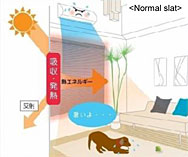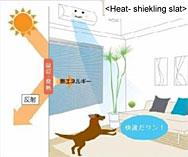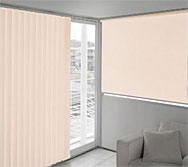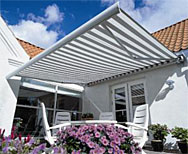Home > General Info. > Environmental Activities
| 1. Environmental policy 2. Efforts to reduce waste and conserve energy 3. Social contributions 4. Environmental efforts in product development |
●Product development
<Increase in purchase rates of eco-friendly materials> We use wood grain sheets for products with wood textures. When developing products made of natural wood, we use wood laminates and trees planted by afforestation programs as often as possible, minimizing use of natural resources. For the covering plates of metallic rails, we use an olefin resin that does not generate harmful chlorine gas or dioxin when burnt. We have increased our use of materials free of heavy metals for various parts and components. For example, we have replaced hexavalent chromium plated materials with trivalent chromium plated materials. |
●Manufacturing development
<Carbon footprint> Expressed quantitatively, ‘carbon footprint’ refers to total CO2 emissions throughout the life of a product, from the time of manufacture through disposal. The carbon footprint concept is currently drawing growing public attention. We have set our Product Category Rule (PCR), a rule for calculating CO2 emissions for curtain rails, on the basis of which we calculated CO2 emissions and obtained carbon footprint certification for the ‘’E202’’ curtain—an industry first. |
 |
||
|
●Usage – Reducing heat penetration into rooms
Heat energy generally flows into or out of a room through windows and doors. Window insulation is a key factor in energy conservation. We seek to develop products that help reduce energy consumption in this phase of use.
<Blinds and roller blinds as a heat shield>Heat-shielding slats for venetian blinds, whose surfaces are coated with heat-shielding materials, reflect infrared rays and reduce penetration of heat energy into the room.
■ Thermography of blind surface (indoor side) 
Heat signature comparison when four 150W reflector lamps are directed at the blind’s rear surface (photographed from the blind’s front surface) Heat-shielding slats (on the right) is reflected the infrared light and suppressing a heat radiation We also offer heat-shielding roller blinds. Featuring a special coating applied to the backs of the screens, these blinds reflect a higher percentage of infrared rays and pass a lower percentage of infrared rays than ordinary screens, making them effective heat shields. These roller blinds are ideal for windows exposed to direct or strong sunlight. |
  Conceptual images of the effects of heat-shielding slats Compared to the ordinary slats in the top image, the heat-shielding slats in the bottom image reflect sunlight and reduce penetration of heat energy.   Reduces penetration of infrared rays fabric. |
<Awnings that effectively block direct sunlight>Awnings are sheets of cloth that block the sun or rain. They are often seen installed above doors and windows of restaurants and stores. Awnings are highly effective shields, blocking sunlight some 10 times more effectively than ordinary curtains and blinds.* Awnings help save energy by reducing cooling loads in summer, reduce furniture fading by blocking UV rays, and shield against rain.
*Report on shielding effects of awnings by a research group headed by Professor Kimura, Faculty of Science and Engineering, Waseda University
|
 “Awnings” can be block direct sunlight |
|

